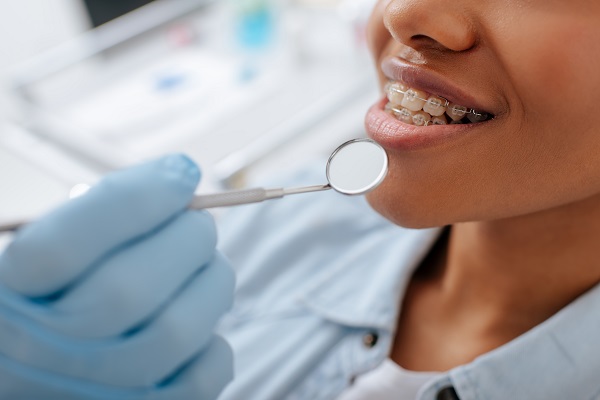Differences between a Dentist and an Orthodontist

Many people do not know the difference between a dentist and an orthodontist. The confusion is understandable especially because both work on teeth. But it is beneficial to know how to tell the difference between them. When you have a problem with your teeth, jaws or gums, it is important that you schedule an appointment with the right professional.
Dentists vs. orthodontists
Dentists and orthodontists are both involved in the care of teeth and can help solve dental problems. Both of them are dental school graduates. Dentists can even offer some orthodontic services. However, there are differences between the professions.
Education
Dentists, who are also known as general or family dentists focus on overall oral health. All practicing dentists have earned either a DMD (doctor of dental medicine) or DDS (doctor of dental surgery) degree from an accredited program. Dentists are required to pass clinical and written exams. Most programs require applicants to have at least a bachelor’s degree.
Orthodontists complete the four years of general dental education in dental school. The professionals then have to complete an accredited program for a minimum of two years. These additional years make them qualified to move the teeth and align jaws. The title ‘orthodontist’ denotes the area of specialization.
Scope of practice
General dentists have to be licensed to practice dentistry. In some states, dentists can also provide specialty care. This happens even though they do not have post-dental school training in an orthodontic residency program. For instance, a dentist may provide the same services as endodontists who have training in root canals, but this does not mean that a dentist is an endodontist. Dentists may also provide aligners or braces to move teeth, but this does not also mean that dentists are orthodontists. In most cases, orthodontists focus only on their dental specialty.
Services
A dentist focuses on overall oral health. Dentists diagnose and treat problems with teeth, gums and other parts of the mouth. Through regular checkups, dentists can detect and treat cavities and diseases. Dentists also provide services such as veneers or crowns to improve the function and appearance of teeth. These treatment options are ideal for teeth that are broken or chipped or that have extensive decay.
Orthodontists are concerned with the examination, diagnosis and treatment of anomalies and malocclusions. Malocclusions may result from missing, crowded or extra teeth or jaws that are not aligned. An orthodontist can straighten the teeth. This can be achieved by moving them through the bone using braces, wires or bands. Orthodontists also help adults and children who want to improve their bite or appearance.
Takeaways
Both dentists and orthodontists work on teeth and help patients deal with problems that affect the teeth, gums and jaws. One major difference between them is education. Both graduate from dental school, but orthodontists must complete further training. The differences should help you determine who to see in case of any dental problems. If you are thinking about orthodontic treatment, you should consider your orthodontist.
Request an appointment here: http://www.pricefamilyortho.com or call Price Family Orthodontics at (972) 528-5519 for an appointment in our Frisco office.
Check out what others are saying about our services on Yelp: Orthodontist in Frisco, TX.
Related Posts
The teenage years can be awkward, especially for those who have to deal with crooked teeth. Invisalign® presents an alternative to braces for teens. These clear aligners can have the same corrective impact as other treatments with less physical and social discomfort. This article will explore how clear aligners can correct an improper bite.Teenagers may…
It is easy to understand why Invisalign® for Teens is a popular teeth-straightening treatment. It removes the need for traditional braces that can be cumbersome, conspicuous, and sometimes painful. Whether you are a parent or teen unsure of what to ask regarding Invisalign for Teens, this article will review some important points to cover during…
Invisalign® clear aligner trays are not just for adults; teenagers and some children can also benefit from this treatment. In fact, orthodontists often recommend it as an alternative to braces for teens because it is discreet, comfortable, and easy to care for. While wearing these trays is relatively effortless, there are some ways to help…
Orthodontic treatment focuses on fixing malocclusions ("bad bites") and other teeth alignment issues. This therapy can benefit people of all ages who want a straighter and healthier smile. Here is a closer look at what this treatment involves, what they can do, and things you need to know to help you decide if orthodontic treatment…
